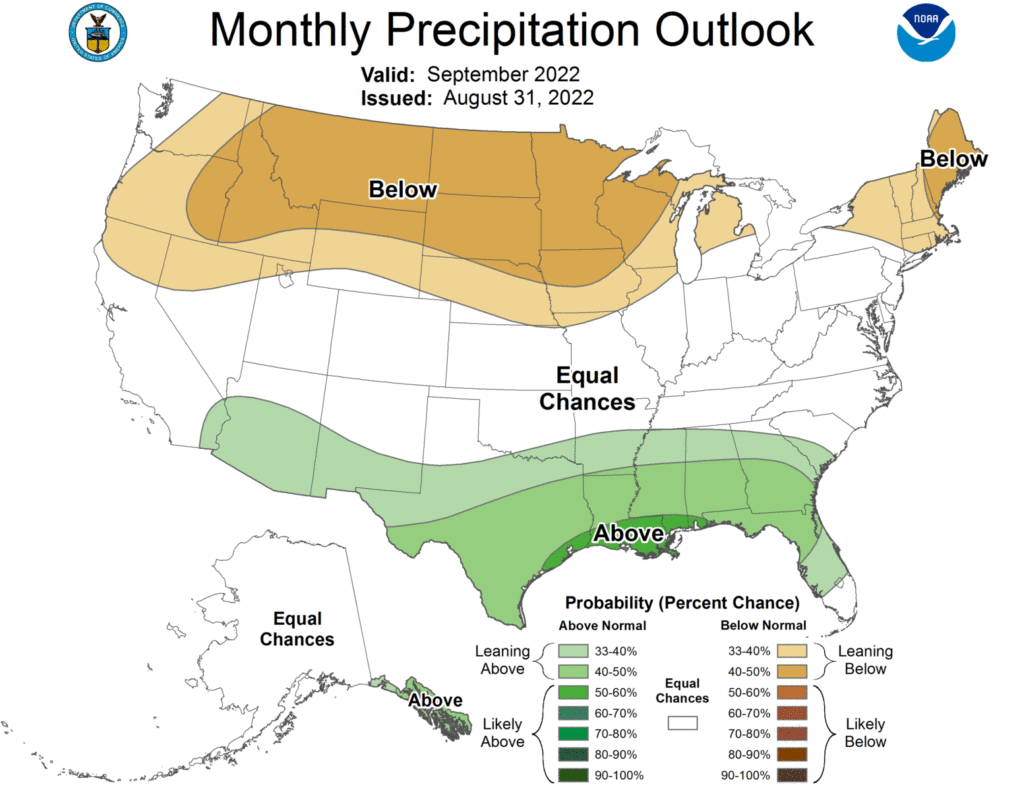Most of the Southeast experienced conditions in August that were wetter and warmer than usual, although as usual there were variations across the region. Some areas are still feeling the impacts of too much rain, while others have experienced dry conditions that have reduced yields in their crops. The humid conditions and lack of sunshine in the areas that have experienced a lot of rain are feeling the impacts in the form of abundant fungal diseases and a difficult time for farmers to get into their fields.
September so far looks like it will be a continuation of warm and wet conditions, although there will be some more seasonal periods and some areas. There will be some periods of dry weather scattered amid the rainy days, so you will need to watch the weather forecasts carefully to find those windows of opportunity to work in the fields.
Later in fall, I expect to see drier conditions appear. This is not unusual in October, since this is the driest month of the year for many parts of the region, but it could be drier than usual as La Niña remains strong and continues to affect our weather over the fall and winter. Generally La Niña has the strongest signal in southern Georgia and Alabama and into Florida, with more northern areas less predictable because the strength of the La Niña is more important in how it affects those regions.
The big question mark in all of this is the tropics. After a very quiet July and August (the quietest since 1941!), we are seeing some life in the tropics as we enter the peak of the Atlantic tropical season. The storms that are expected to form early in September are all predicted to turn north before they get close to the East Coast so won’t provide much impact to us. However, there is still more than half the season to go, and some years, like 1961, had quite a few storms in the second half compared to the first half, so don’t write off the season just yet. The eventual path and strength of the storms will determine what impacts we are likely to see, and of course we don’t know where any storms that develop will go at this point. The best I can say is to keep watching the forecasts to make sure you know what is coming in time to make preparations well ahead of any rain or landfall that might occur.
